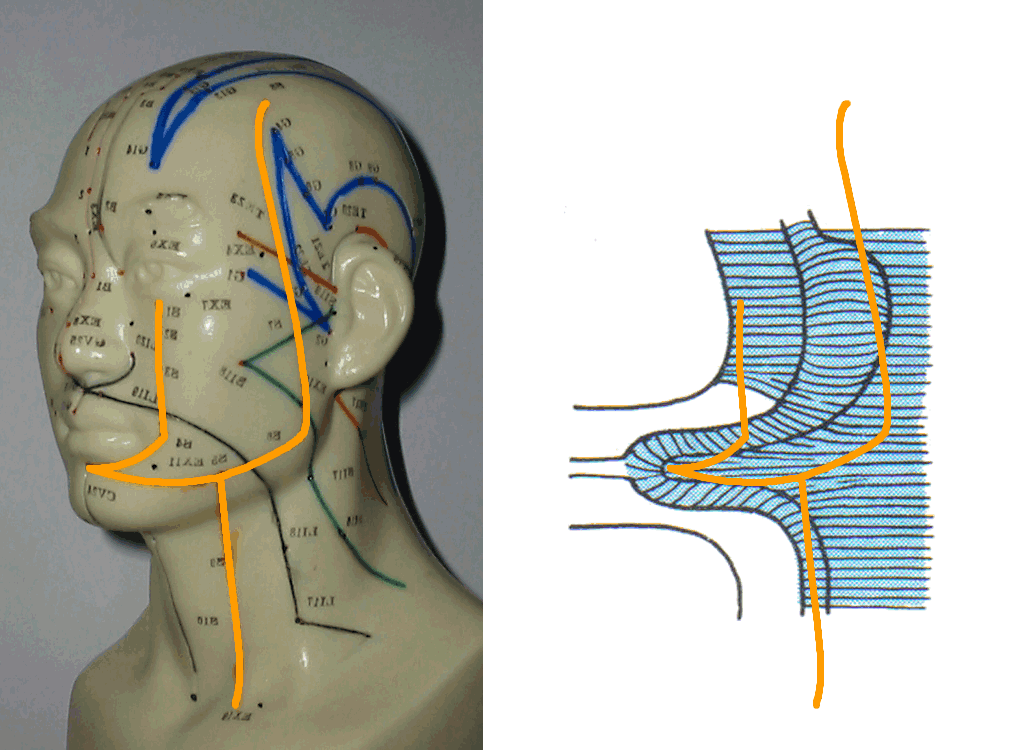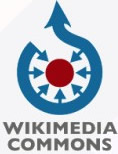| The Stomach © 2008-2019 Stefano Marcelli |
|||
|
| |||
|
The
Stomach meridian and its corresponding internal organ play a fundamental role in
the traditional Chinese medical physiology.
All organs "turn" around the stomach that is the "Centre". Observing the image below,
the only shape that the stomach meridian pathway (orange) over the face recalls is the
primitive midgut (on the right), when before rotating from the sagittal to coronal
plane, forms a loop that herniates physiologically into the umbilical
chord. We have already seen this special morphogenetic behaviour in the section of the Small Intestine meridian.
What is here of special interest is that, according to Traditional Chinese
Medicine, every organ-meridian of the lower limb is coupled
with the yang-yin equivalent organ-meridian of the upper limb, and vice versa
(see minimal knowledge on the
acupuncture meridian system). The coupled meridian of the stomach is that
of the Large Intestine. Following after each other —Large
Intestine meridian continues as Stomach meridian—
they form the Great Meridian of Tai Yang, running in a continual way along
the upper and lower limb. | |||
 |
|||
|
|
|||
 |
|||
|
|
Some images in this site come from the most important resource of free images in the web. Click the logo on the left to visit the site. | ||
